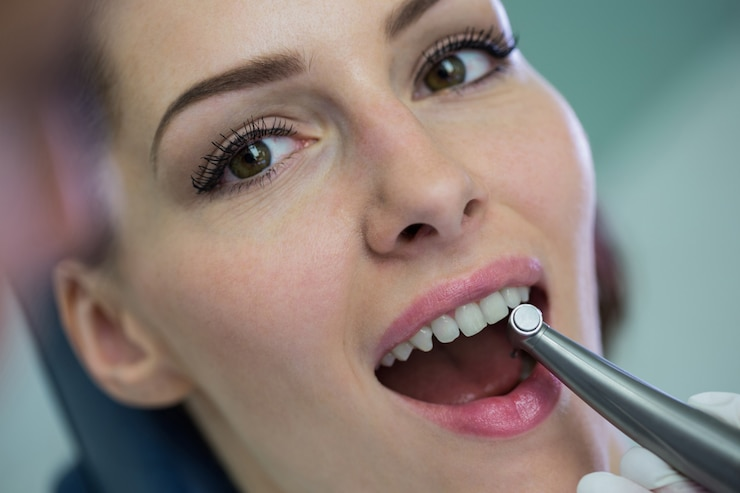Tooth extractions are often part of orthodontic treatment, but many people wonder, can an orthodontist pull teeth? In this article, we will explore the circumstances under which orthodontists perform tooth extractions, the reasons behind them, and the procedures involved. We will also cover what happens after a tooth is pulled, alternatives to extractions, and what patients can expect during and after the process.
Table of Contents
Toggle- Why Might an Orthodontist Pull Teeth?
- Types of Tooth Extractions in Orthodontics
- What Happens After a Tooth is Pulled for Braces?
- How Do Orthodontists Decide to Extract Teeth?
- What Are the Alternatives to Tooth Extractions in Orthodontics?
- Why Choose Macquarie Dental Care Belconnen for Orthodontic Extractions?
- References:
- Frequently Asked Questions (FAQs)
Why Might an Orthodontist Pull Teeth?
Orthodontists may recommend pulling teeth to achieve optimal alignment, especially in cases where the teeth are overcrowded or the bite is misaligned. Extractions are typically done to make space in the mouth for braces or other orthodontic treatments. Let’s look at some of the most common reasons for tooth extractions:
- Overcrowding
When there isn’t enough space in the jaw for all of the teeth, an orthodontist may recommend extracting one or more teeth to create room. This is often the case when teeth are too large for the available space in the mouth, resulting in overcrowding.
- Malocclusion (Misaligned Bite)
A malocclusion occurs when the upper and lower teeth do not align properly. In severe cases, tooth extraction may be necessary to correct bite issues, such as overbites, underbites, and crossbites, by making more room for the teeth to align properly.
- Wisdom Teeth
Wisdom teeth, or third molars, are often extracted because they can cause overcrowding, misalignment, or discomfort when they erupt in the mouth. These teeth often lack adequate space in the jaw, which can lead to impaction or pushing other teeth out of alignment.
- Impacted Teeth
Sometimes, teeth can become impacted, meaning they fail to emerge through the gum line properly. This typically happens with wisdom teeth or other teeth that lack sufficient space. An orthodontist may recommend removing impacted teeth to prevent further complications and to ensure the alignment of surrounding teeth.
- Improper Tooth Development
In some cases, a tooth may not develop properly and may need to be extracted to allow room for healthier teeth. This could happen if a tooth is causing problems such as infections, or if it is not aligned properly with the rest of the teeth.
Types of Tooth Extractions in Orthodontics
There are different types of tooth extractions, depending on the specific situation. Let’s break down the most common types:
- Simple Extraction
A simple extraction is typically performed when the tooth is visible above the gum line and is not impacted. This type of extraction involves removing the tooth with minimal surgical intervention and is often quicker and less complex.
- Surgical Extraction
In cases where the tooth is impacted or submerged under the gum line, a surgical extraction is necessary. This procedure is more complex and may involve cutting into the gum and bone to remove the tooth. Surgical extractions are usually performed under local anaesthesia or general anaesthesia.
What Happens After a Tooth is Pulled for Braces?
After a tooth extraction, it’s essential to follow specific post-operative care instructions to ensure a smooth recovery. Here’s what you can expect after the procedure:
- Post-Extraction Care
Patients will typically experience some swelling and discomfort after the extraction. This is normal, and pain management can be achieved with prescribed pain relief medications. Ice packs may also help reduce swelling in the days following the extraction. Patients should also avoid eating hard foods or drinking through a straw, as this can disturb the extraction site.
- Braces Fitting
Once the extraction site has healed sufficiently, the orthodontist will fit braces or other orthodontic appliances to begin the process of aligning the remaining teeth. This typically occurs several weeks after the extraction, allowing the gums to heal and the tooth sockets to close.
- Side Effects of Tooth Removal
Some patients may experience minor changes in their bite as their teeth begin to move into the newly created spaces. It’s essential to attend regular follow-up appointments to monitor progress and make adjustments to the braces as needed.
How Do Orthodontists Decide to Extract Teeth?
Orthodontists rely on several diagnostic tools and factors to decide whether tooth extraction is necessary for a patient. These include:
- X-rays
X-rays are critical in helping orthodontists visualise the position of the teeth and determine whether there is enough space in the mouth for proper alignment. The X-ray will also show if any teeth are impacted or incorrectly positioned.
- Examination of the Bite
The orthodontist will examine the patient’s bite to check for any signs of malocclusion, such as overbites, underbites, or crossbites. If the bite is severely misaligned, extractions may be necessary to correct the issue.
- Age and Condition
Younger patients tend to heal faster, and their bones are still developing, making extractions and subsequent tooth movement easier. However, for adults, the orthodontist must consider other factors such as the condition of the teeth and the jaw before deciding whether extraction is appropriate.
What Are the Alternatives to Tooth Extractions in Orthodontics?
While tooth extraction is sometimes necessary, there are alternatives available that can help avoid the need for pulling teeth. These include:
- Jaw Expansion
For patients with narrow jaws, an orthodontist may use appliances that gradually expand the jaw. This process helps create more space for the teeth without needing to remove any teeth.
- Interproximal Reduction (IPR)
Interproximal reduction is a technique where small amounts of enamel are shaved off from the sides of teeth to create space. This method is often used in less severe cases of crowding, allowing the teeth to align properly without the need for extractions.
- Invisalign
In certain cases, Invisalign, a clear aligner system, can be used to gradually shift teeth into position without the need for extractions. However, this depends on the severity of the misalignment and the available space in the mouth.
Why Choose Macquarie Dental Care Belconnen for Orthodontic Extractions?
At Macquarie Dental Care Belconnen, our experienced orthodontists are dedicated to providing personalised care tailored to your needs. We take great care in evaluating the best treatment options for each patient, whether that involves tooth extractions, braces, or alternative treatments like Invisalign. Our goal is to help you achieve the smile you’ve always wanted while maintaining the health of your teeth and gums throughout the process.
Our state-of-the-art facilities and expert team ensure that you receive the highest quality care in a comfortable and welcoming environment. If you’re considering orthodontic treatment, including tooth extractions, we invite you to contact us for a consultation to discuss your options.
Read More: Dentist vs. Orthodontist: What’s the Difference?
References:
- Australian Dental Association (ADA). (n.d.). Orthodontics and Tooth Extractions.
- American Association of Orthodontists. (2021). Tooth Extraction in Orthodontics.
Frequently Asked Questions (FAQs)
- Is tooth extraction necessary for braces?
Tooth extraction is not always necessary for braces. It depends on the severity of the misalignment, overcrowding, and other factors such as jaw size. Your orthodontist will determine if extractions are necessary based on your specific situation.
- How long does it take to recover from a tooth extraction?
Recovery time after a tooth extraction typically takes a few days to a week. Swelling and discomfort may occur, but these symptoms should subside within a few days. Follow your orthodontist’s aftercare instructions to promote healing.
- What happens if I don’t get my wisdom teeth removed before braces?
If wisdom teeth are not removed and they are causing overcrowding or misalignment, they can affect your orthodontic treatment and the long-term results. It’s essential to discuss the need for wisdom tooth removal with your orthodontist before starting treatment. Visit
- Can tooth extractions affect the appearance of my face?
In most cases, tooth extractions will not affect your overall facial appearance. In some instances, creating space in the mouth can improve the profile by aligning the teeth and jaw properly.
- How many teeth are usually removed for braces?
Typically, one to four teeth may be removed, depending on the severity of the overcrowding or bite issues. The decision is based on an individual assessment by Dentist Near You.
- Is it safe for adults to have teeth extracted for orthodontic treatment?
Yes, it is generally safe for adults to undergo tooth extractions for orthodontic treatment. However, adults may experience a longer recovery time and additional considerations depending on their bone structure and overall oral health.



